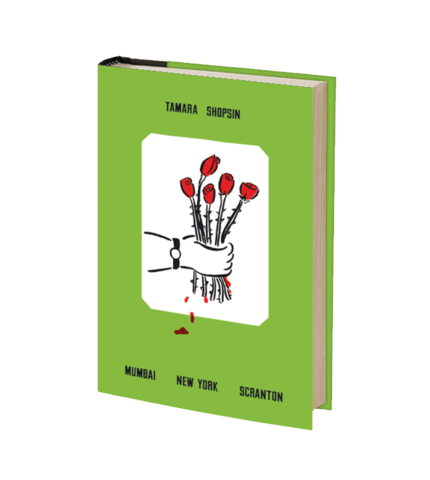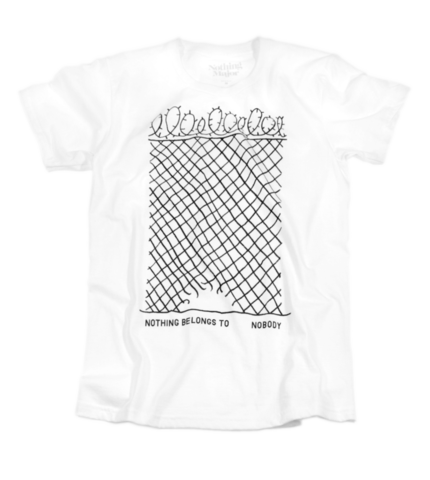Will Bryant
The graphic designer/artist talks about finding his way from the land of Friday Night Lights to a career as a go-to designer with a knack for reviving the past, and how being perpetually earnest can be a bit depressing.
Studio photos by Michael A. Muller
Twenty-seven-year-old Will Bryant carves a colorful, nostalgic niche for himself with a steady stream of work plastered across everything from T-shirts to GIFs to digital show posters and a covetable client list that includes the New York Times Magazine, Ace Hotel, and Stussy. The Texas native didn’t think about art and graphic design as a serious option until college—but we’re certainly glad he found his way. Now based in Portland, he currently practices both art and design and makes little distinction between the two. Nothing Major grilled Bryant on his small-town upbringing, his attraction to nostalgia, and how being positive all the time can actually be a bit depressing.
 Talk about yourself, your upbringing.
Talk about yourself, your upbringing.
I was raised in the South, in a small town in east Texas. I did drawing when I was in school, on book covers and stuff, but making really wasn’t a part of my life at that stage. I did build a lot of stuff and fix things. I was interested in the way that things worked—specifically taking apart my basketball goal all the time, for some reason. I had numerous goals of different sizes, and I remember one was built out of PVC pipe... I have an older brother and he was a huge influence on directing me towards interests and superheroes and us making costumes, so that’s kinda where some of the making would come into play. I was in a pocket, and I’ve kind of always been in a pocket—Texarkana, Texas is where I grew up—then I went to undergrad in Mississippi in Starkville, which is another bubble. Being in that environment was amazing because it was kind of like a neutral playing field, I had no idea what design was or really what art is. I didn’t know I was going to go into graphic design. I thought that I could minor in it, and had no idea that it’s like an entire program and a complicated process to actually apply, get in, and go through—it’s not just something you are interested in because you like Photoshop. Then I went into the business school and was given this slick branded folder, pencils—all this material—but then they started talking about all these math classes I was going to have to take and I was like “No way, this isn’t going to work.” Went over to the art department and the building is like, barely standing, but the people were full of energy and I don’t know, something just immediately clicked.  Excited II
Excited II
So you went to school planning to major in business but then you found this world of art and it clicked with you?
Business, it’s…you know “What are you going to get a degree in?” “Oh, business.” Because you can make money doing business? I don’t know, that’s what I thought. But I was interested in album packaging really, that was the first interest in high school; there was a small group of people that were all in a band and I started doing flyers for them that were really terrible but I always wanted to do music packaging and I love that relationship between—oftentimes it’s someone in the band doing artwork and that’s beautiful, you can’t touch that, that always is very fitting—a visual artist and a musician found in Radiohead and Stanley Donwood, I was so fascinated with that. There’s a neat story behind Thom Yorke’s first solo album where he had been working on the songs for a long time, for The Eraser, but it hadn’t come together. And then Stanley had been working on these woodblock prints and it had just fit visually and that inspired Thom to finish and put out the album—I think that’s really neat.
 It’s impressive that your time as an artist has been relatively short.
It’s impressive that your time as an artist has been relatively short.
It’s not like it was just all of a sudden. I just didn’t have those kind of people that really brought that out of me fully. I mean, I had an 8th grade art teacher. I took two art classes—one in 8th grade and one in 9th grade—and I drew, but it was just on notebooks. Team uniforms... I used to always make up sports jerseys or I was on this weird kick where I was drawing profiles of guys with facial hair, mostly sports stuff, some shoes.
 Because Texas, right?
Because Texas, right?
‘Cuz Texas, right. I lived Friday Night Lights—that was my thing.
How do you describe yourself as an artist?
There isn’t much of a distinction between myself and my work. It’s very much integrated. I feel like a lot of contemporary artists, you learn more about that person through their work, which is the same case for me but it’s like very deep and more layered. Mine is a lot of surface reads I think within my work. I’m very passionate about making things and putting my personality in them, all over them, around them. But I like doing things with other people—I’m huge into collaboration, positivity is a thread that runs throughout but then I think I’ve gotten a little bit more of a critical edge after grad school, that there were darker moments about consumption and culture. Also the overabundance of happiness can kinda be sad. But it’s all real.
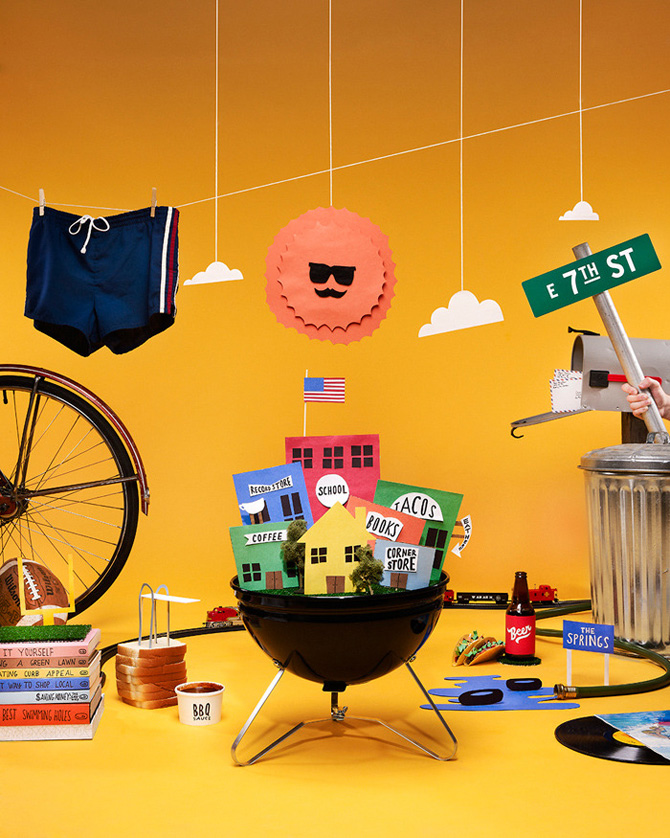 For Good Magazine
For Good Magazine
Is that how you describe your aesthetic mostly? Positive but also just, like, you?
It’s about doing what’s fun: color, accessibility. It’s an attitude. But then after grad school, the things that I’ve added are more into exploring functionality and language and commerce and all this stuff through a process of play. If you land on my site, most of the work does seem very playful, and it doesn’t seem serious—nor do I really want it to. I’m a goofball, that’s what makes it entertaining for me I guess. Typical grad school/art school stuff in general it’s like, the moody artist that goes to this deep, dark art cave and then comes out with this amazing commandment of work that’s supposed to mean a lot of things and that’s not me at all. There are a lot of people working in this way that’s just, fully integrated in how they live and when they hang out.
 What draws you to nostalgia in your work?
What draws you to nostalgia in your work?
I just can’t not look at this kind of stuff, and it’s not that I want to go back into that time where this was prevalent, it’s more of, well, using primary colors, things can seem more childish and playful. Let’s just talk about The Talking Heads—I was born right when all that was going on––there’s a desire to be part of it, but then knowing that that’s not the time I’m supposed to be a part of. I think it’s amazing that I can discover this stuff much later and it has the same impact on me as it did someone that was experiencing it when it was going on. There’s so many complicated emotions about them—and I love that they’re artists, too. I just love that [art school is] where they all met. They have a mass appeal but it’s very much subversive, or at least the mentality going into it, you’re doing your own thing, like Pee-wee’s Playhouse, like “How is this entering every Saturday morning household?” like kids all around the world are watching this thing but it’s put on by artists and it has this super-weird, sometimes inappropriate-for-kids [vibe.] The thing with the Talking Heads: you have this duality, like these things are kinda dark, kinda depressing, very complicated, but then it’s over this dance music. I’m just fascinated by things—is that a boring answer? I’m just interested. I’m also drawn to specific attitudes and personalities and you have this resurgence of things that are all the ‘80s that are very much stemming from this 1950s mentality, where everything’s good, everything’s cool—and you had a little bit of that in the ‘90s, too, but then I think it’s very much back despite all of the things that are happening in the world.
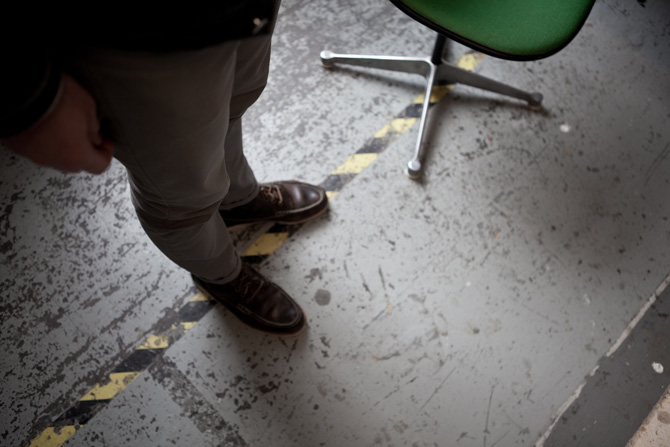 Your aesthetic is pretty popular across the Internet right now. How do you think you distinguish yourself from other artists and how do you see your work as being different?
Your aesthetic is pretty popular across the Internet right now. How do you think you distinguish yourself from other artists and how do you see your work as being different?
That is tough. I used to say it’s the voice, it’s what is behind it, and I still believe that even though sometimes people even adapt someone else’s voice and visual style, and that’s frightening. It’s scary, because sometimes it works, sometimes people figure out a way to adapt that and it becomes more about them. The way things look, that’s only one component of it. I don’t know, I really don’t know how—just keep making more work, really, is the short answer. I think my work has evolved quite a bit over the past—well, I guess I’ve only been working for six years—two years, in grad school, things have changed a lot. It all goes back to the voice behind it, because that’s really hard to fake.
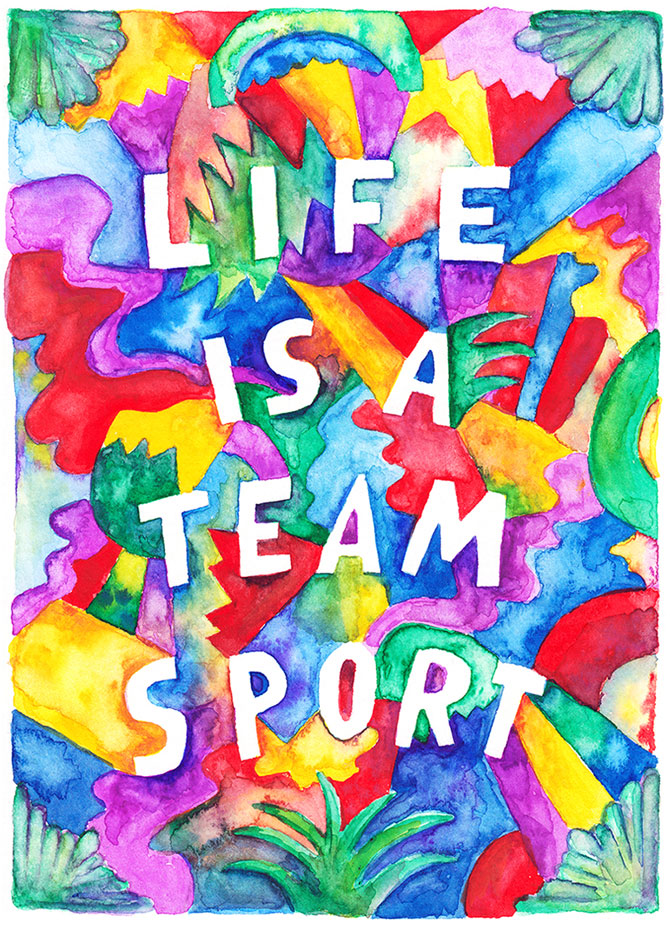
What kind of crazy-ass thing would you dream of making if money and time were no object?
Scale is something that would have to do with that. My dream—I’m really going to start making smart moves to work toward—is a playground. I want to design a playground, specifically for my hometown in Texas, which is all kind of feasible. I think it could be a possibility. I don’t know that the world really needs another massive public sculpture but it’s exciting to see that.
Do you prefer making work for yourself or work on commission? You said you like a nice balance?
I do like a nice balance. At times, all of those things are passion projects and other times, all of the passion projects and client projects are commission projects.
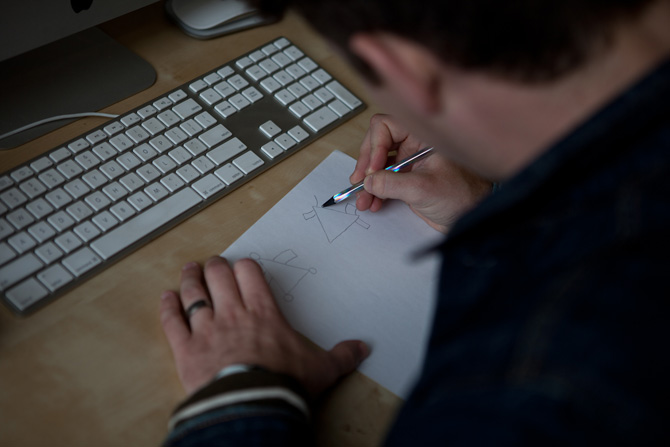
In terms of your mentality?
Yeah, like through the process you’re like “I don’t want to be doing this anymore,” but then the next day you’re like “No, I love doing this.” Or maybe that changes within the minute. For me, at this point in my life, it’s still maintaining that balance of both. I guess the beautiful painted picture of the artist getting to do whatever they want and they have funding for that—I don’t know if that exists. I assume it does.
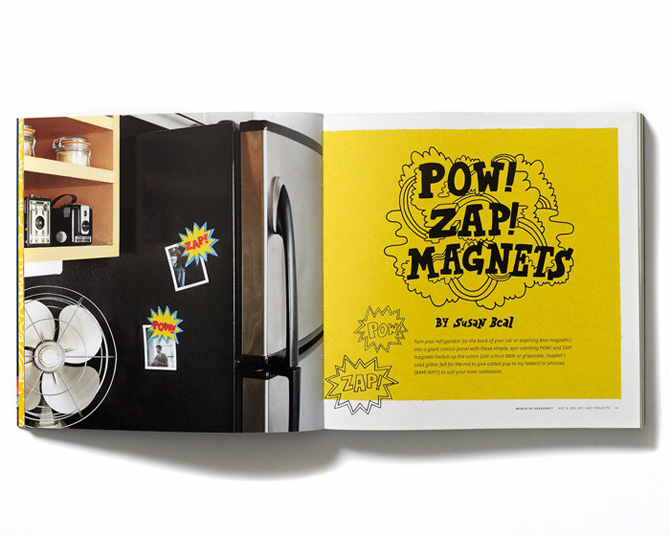
What’s next for you?
The studio I’m involved with is called Department of Friendship and right now we’re both working from different locations and I hope that goes into more and more client work [for example National Forest out of LA.] I’m still doing what you see on my portfolio site, those types of projects. I definitely want to do more apparel and pattern/textiles. I’m hoping to do window displays, and I’d like to be painting more, doing sculpture. A lot of things.

